 The Neonatura Fern
The Neonatura Fern
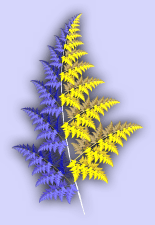
Figure 1: The Neonatura Fern
The Neonatura logo is the fern shown to the right. It's not a colorized picture or a hand drawing. Instead, the image is entirely computer-generated, based on a modification of the iterated function system technique for making fractals.
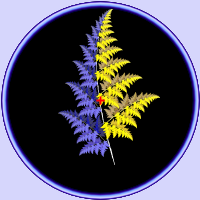
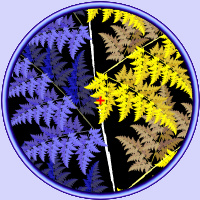
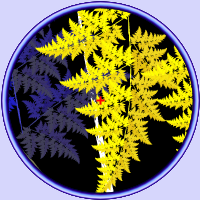
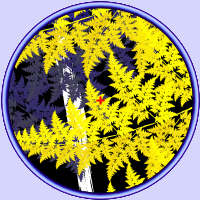

Figure 2: Progressive Zoom
What's a Fractal?
Generally speaking, a fractal is an image or object that contains details at a variety of scales. Figure 2 shows a progressive magnification of part of the fern leaf; each picture is 4X more magnified than the previous one in the sequence. See how each image has similar details as the original figure? No matter how much you “zoom” in on the figure, there is always more detail to see — leaves on leaves on leaves. This is different than the behavior of an ordinary (non-fractal) shape, like a circle. Magnify the edge of a circle, and it looks more and more like a straight line instead of a circle — boring!
You might have heard of a famous fractal image known as the Mandelbrot set; it, too, displays self-similarity. Fractals aren't just for fun, either; they form good models for naturally occuring things, from mountains to coastlines to fracture patterns. Many plants, like ferns and trees, also grow in fractal-like patterns. Even snowflakes tend to exhibit fractal self-similarity.
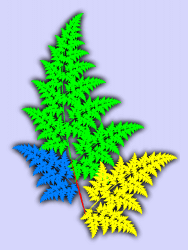
Figure 3: A Collection of Copies
So What's an Iterated Function System?
Iterated function systems, or IFSs, are a method for defining a fractal image as consisting of several copies of itself, shrunken, rotated, or squashed in various ways. You can see how a copy of the whole fern, rotated and scaled down, can be fit inside the main leaf. In fact, the whole fern can be described as a collection of such copies; this is illustrated in Figure 3.
The Neonatura fern is constructed entirely out of four copies of itself, here colored green, blue, yellow, and red. The green copy is simply shrunken and rotated slightly from the whole fern. The blue copy is “flipped” horizontally to form the prototypical left-side leaf. The red copy is “squished” horizontally to form the bottom part of the main stem. The yellow copy is a ghost; it doesn't appear in the final image because it's rendered transparently, but further copies of it do appear.
Remarkably, computer programs can reconstruct the entire image just from knowing how copies of the figure can be tiled to cover the original image!
The construction of ferns by the IFS method is fairly straightforward, and is one of the original applications of the IFS technique. The Neonatura fern is similar to one originally constructed by Barnsley (an early fractals researcher), but has different proportions and is colored.
Today, IFS systems can be used to generate a wide variety of colorful designs and patterns. The Wikipedia articles on iterated function system and fractal have lots of complicated math, and some pretty pictures explaining how this all works. A little exploration will uncover links to available freeware you can use to generate your own fractals.
One Step at a Time...
By controlling the order in which the ever-smaller copies of the fern are drawn, any number of different animated effects can be created. This technique was used to generate the “Neonatura video” shown at the start of all Neonatura Games. Each of the first four “flashes” represents the introduction of each of the four “copying” rules that make up the fern:
- The first rule, by itself, just draws a single point at the base of the fern
- The second rule fills in the stem
- The third rule adds the right-hand leaves (and leaves of leaves, and so on)
- And the fourth rule generates the left-hand leaves, and completes the figure.
A few special effects, and voila!